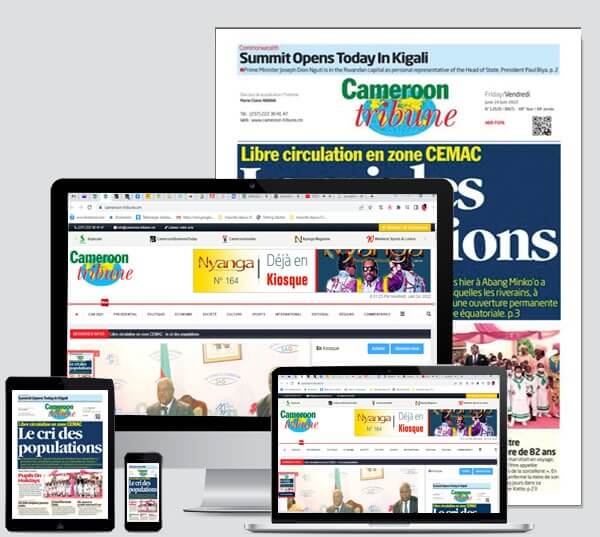There exist a government remedial initiative, since 3 April, 2020, to salvage underdevelopment and destructions caused in the two English Speaking Regions of Cameroon as a result of the persistent socio-political crisis. The policy was set as the “Presidential Plan for Reconstruction and Development of North West and South West Regions of Cameroon (PPRD-NW/SW)”. It is an upshot of the “Major National Dialogue” piloted in Yaounde from 30 September through 4 October, 2019 by Prime Minister Chief Dr John Ngute.
The PPRD plan seeks to redeem the mutating crisis sparked on 11 October, 2016, following a Lawyer-Teacher confab on educational and legal grievances. Though beginning as such, the Anglophone problem quickly degenerated into what analysts now term as an arm-conflict between the State of Cameroon and separatist ideologists. When implemented, the PPRD-NW/SW would touch the lives of some six million people established on the 42,000-square kilometre land covering the North West and South West Regions of Cameroon.
That background aims at showing how the six-year running conflict, already described by many sources as a complex emergency, has steamed up immeasurable destructions and definitely sunk, to a precipitous depth, the socio-economic development of the North West and South West Regions. Reason why President Paul Biya tapped from the Major National Dialogue, which he put in motion, to remediate and conciliate the situation.
Now, two years into the PPRD-NW/SW, it may be a concern to measure how much water has run under the bridge with the lofty project. Questions arise as to who has done what? Where were actions to take place? On what sectors of life was the plan pegged? Who was to benefit what? The interrogations abound and can stretch to all facets.
The first thing to note may be that the PPRD was a wide range of significant projects to provide needs observed on the North West and South West terrain. Such plans were scientifically analysed to possibly meet the desires of the suffering population, allay their pain and to look ahead for a better relational future. Taken from the angle of peace, the plan could be seen as woven around a good intention to identify causes, treat the course and cushion the effects of the rash vomited during the crisis.
That is as far as the nature of PPRD-NW/SW could be fathomed socially and economically. Maybe other additional political measures are still underway. It is true that in some areas, especially in remote strongholds of armed groups, the terrain still remains explosively mined. As such, confrontational sparks and cases of insecurity are still evident on the ground. And this may not augur well for meaningful engagement in the direction of reconstruction. This can equally explain the sometimes generalised call for meaningful dialogue. For this to be achieved, much initiative of peace is still expected on the ground. Also, the greater call is for people to see development, reconstruction, peace and harmony to supersede any conquering or parochial interests.
This is where the population have an indispensable role to play. Call it people power; the population of the North West and South West Regions have to muster the courage, identify enemies of their development and shame them for the much-needed normalcy to be restored. Government has shown the political will with the reconstruction plan gradually getting funding.
Arguably, many are not fully aware of the treasures that the PPRD had off its sleeves. Gallantly explained, it unveils construction and reconstruction, rehabilitation and maintenance as well as exploratory measures to enhance life in Cameroon. Forward looking philosophers would advise not to count corpses when settling a war. Again, not to dwell on causes, but to find solutions and seek the way forward.
The PPRD-NW/SW as an emanation of the Major National Dialogue promises amenities that are cherished by the population as real social and economic needs. To a greater extent, the plan received a cross-section approval of the people suffering the real pinch in the crisis’ shoe.
As detailed out in the multi-sectorial PPRD, “it aims to restore and improve the living conditions of the populations severely affected by the crisis in the North West and South West. Also, it aims to catch up the delay incurred by these two regions by putting them back on the path of growth and development. In this sense, the PPRD-NW/SW is an instrument at the service of peace like other government initiatives taken since the outbreak of this crisis.”
As imbedded in the descriptive summary of the PPRD-NW/SW, public participation in the vision is profoundly expected to attain the full success of the vision. This is envisaged through public consultations of the local beneficiary po...
Cet article complet est réservé aux abonnés
Déjà abonné ? Identifiez-vous >
Accédez en illimité à Cameroon Tribune Digital à partir de 26250 FCFA
Je M'abonne1 minute suffit pour vous abonner à Cameroon Tribune Digital !
- Votre numéro spécial cameroon-tribune en version numérique
- Des encarts
- Des appels d'offres exclusives
- D'avant-première (accès 24h avant la publication)
- Des éditions consultables sur tous supports (smartphone, tablettes, PC)











Commentaires